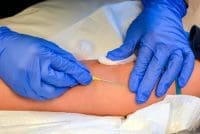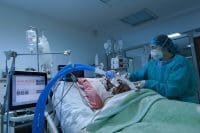In last month’s blog, I wrote about the importance of equipment procurement from the standpoint of streamlining a purchasing process, understanding the complete value of equipment purchases, and minimizing time spent with equipment vendors. I stressed the significance of these particular considerations because it’s important for safe patient handling coordinators to establish themselves not only as subject matter experts, but also as being fiscally responsible. I highlighted the importance of not becoming captivated by the dazzling features that so many of these patient-lift devices offer, but to focus on the functionality of the product and how it may or may not be transitioned into an organization’s existing patient-care processes.
Of course, patient-lift equipment will always be needed to protect worker’s safety in patient-care settings. This equipment represents the foundation that safe patient handling programs are built upon. A coordinator’s ability to select devices that will influence end-user’s commitment towards using the device will be the major determinant for whether the facility will effectively achieve reductions in employee injuries related to lifting and repositioning patients. In this blog, I’ll discuss important steps to consider in the role of safe patient handling coordinator related to equipment procurement, which represents the most essential component of the safe patient handling implementation process.
Connecting patient-lift devices to end-users
Evidence-based guidance for establishing safe patient handling programs recommend allowing staff (end-users) to have an active stake in the equipment selection process. This is important because staff members are more likely to commit to a product when they have had input into the decision-making process. Staff should be allowed this opportunity to provide input, but the coordinator has a responsibility to ensure that the products presented to staff align with patient-lift equipment options that are compatible with existing practices and processes, and have been previously agreed upon by key administrative stakeholders, including hospital fiscal administrators, nurse executives, facility management, logistics, and engineering. It’s the coordinator’s responsibility to provide executive stakeholders with relevant strengths, weaknesses, opportunities, and threats to be expected in the implementation of an advanced level comprehensive program such as safe patient handling. Value-based explanations are necessary for senior level management to understand how the use of patient-lift devices contributes to its overall mission of quality patient care.
Consolidating pertinent information
One of the many challenges that hospitals face when considering implementing safe patient handling programs is the ability to consolidate all relevant employee safety information that effectively highlights challenges while simultaneously providing the necessary data needed to demonstrate how a comprehensive injury prevention program would cost effectively address each obstacle. Given the many patient care services that make up one hospital organization, it’s not uncommon for professional representatives from various patient-care areas to attempt to address the known issue of employee injuries through the purchase of capital patient-lift equipment. Unfortunately, it’s not uncommon that in an attempt to be proactive, for those individual services to prioritize safety needs from a perspective that addresses their immediate areas, with little to no regard for how those purchases will impact the entire organization. This represents one of the many reasons why hospitals often find patient-lift devices spread randomly throughout the organization, with little to no meaningful return in the form of employee injury reductions. It’s this lack of understanding of the need for systematic participation that leaves lasting negative impressions, such as patient-lift equipment is too expensive of a risk to only produce marginal reductions in employee injuries. It also justifies why it’s necessary to delegate a central figure to consolidate all clinical and support systems needed to create a comprehensive injury prevention process.
The nursing department
A safe patient handling coordinator designated from the nursing department (centralized service) theoretically provides the organization with the best opportunity to effectively implement a successful safe patient handling program. An experienced nurse is more likely to understand the implications that decisions related to capital equipment purchases will have on both patient-care and support services alike. In addition, the managerial influences needed to oversee the adoption of new patient-lift processes must begin with the department whose employees are the most affected http://www.therphawkinsgroup.com/resources/whitepapers/.
Streamlining a clinically based injury prevention program through nursing services improves the likelihood that a safe patient handling program can be created and sustained long term. Ongoing support from top-down clinical leadership within the nursing department ensures that patient-lift processes ranging from equipment competencies to equipment cleaning instructions are maintained and performed to manufacturer standards and recommendations. Not to overlook the safety risks that other healthcare professionals face, but the reality of injuries and risk for injuries are more likely to occur in patient-care environments, where time spent is dominated by nursing personnel. This is what makes it a foregone conclusion that the success of safe patient handling programs is usually a direct reflection of the nursing department’s level of engagement.
The best option
The day that ergonomic assessments for clinical workplace injuries begin also marks the beginning of the equipment procurement process. When implementing safe patient handling programs, purchasing and procurement recommendations must directly align with the injury risks associated with the lifting and repositioning tasks being performed—all for the purposes of deriving a patient-lift equipment solution needed to avert the identified injury risks. An experienced clinical leader who can deliver optimal purchasing solutions while effectively consolidating patient-care systems and processes is the best option for ensuring that an organization’s safe patient handling program works effectively.
Roric P. Hawkins is the founder and president of The RP Hawkins Group (www.therphawkinsgroup.com) and is the safe patient handling coordinator at Michael E. DeBakey VAMC in Houston, TX. The views expressed here are his own.


















